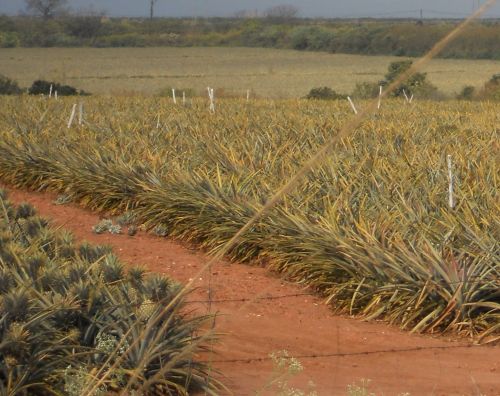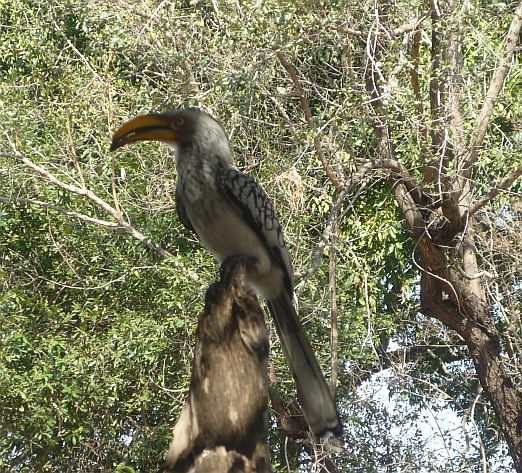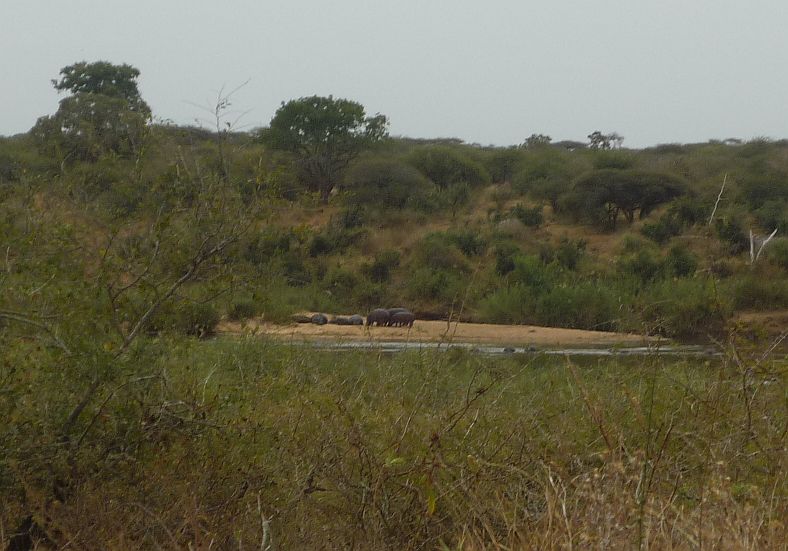
From left to right — Eric, Phumzile, Ethel and Clementine. In background — Sifiso (intern), Mbusi and Graham

Clockwise around table — Larry, Klaus, Eric, Sifiso (intern), Salema, Jean and Steve. In orange against the wall — Bobo.

The post office still has long rows of call boxes (coin operated phones), but with the advent of cell phones, not many are used. In the past there was a line waiting to use one of these phones.

This sports store in the downtown mall looks much like those in Indiana with the exception of the cardboard boxes against the wall.

A ‘few’ cast aluminum (aluminium in British English) pots at the market — these are much lighter than the old black cast iron pots, but locals say they do not work as well.

Swazi ladies often carry heavy loads on their heads. I just managed to take this photo as this lady stepped behind the back of truck.

Maybe we should have item 1 on the menu or item 5 (which is the same as item1)!! It only costs $1.50!!

The last stop was at Pick N Pay to fulfill a request for a small jar of Nescafe coffee. We were amazed at the choices. There are even more choices in the next photo. In the past, there would have been only one choice. Note — E10 is approximately equal to $1.

The request was for a jar with other languages on it. In the past, there would have been at least Afrikaans and English on every product. Now it is in English only. We suspect that this is a backlash from the days of apartheid in South Africa. Most processed food in Swaziland is packaged in South Africa. On the jar we bought, the ingredients are in three languages, but in very small print only.

This is the house that we lived in for 13 years. We were living here when all of our sons were born, except for Allan. The color was yellow with brown trim then and the fence was chain link, instead of concrete and steel angle.

This iron ore truck is one of hundreds that are continually hauling ore between Ngwenya Mine on the west side of Swaziland to Mpaka or the port in Mozambique. The roads are suffering as a result.
Today we arrived at staff meeting and noticed something was up. Tea cups, cake, and other finger food was being set out. After staff meeting, there was a ‘thank you tea’ for us, since we will now be leaving Swaziland next Wednesday instead of Thursday.
After the tea, Virginia and I walked downtown. Our first stop was to buy some units of electricity. Instead of receiving a bill for electricity every month, electricity must be prepaid. There is a display unit near the circuit breaker box that shows how many units are left. If it goes to zero, the electricity is shut off. There are many other places to purchase units, but we went to the post office, since it was closest. Payment is made, then a receipt is printed with a 16 digit number to enter into the display box. When this number is keyed into the display unit, the amount of units purchased is added on to the remaining units. Somehow the display unit knows whether the 16 digit number is valid and how many units to add.
We did some shopping downtown, and at the market, for items to take back to Indiana with us.
This evening we attended our last Wednesday evening serve at EBC. Pastor Deon was back from Capetown and spoke on Psalm 91. Someone else had been scheduled to speak, but had to cancel at the last minute.












































